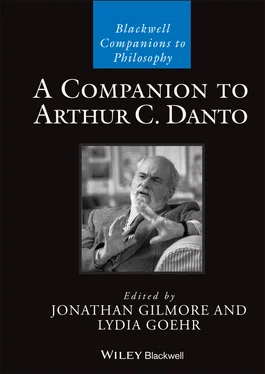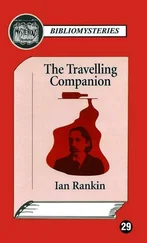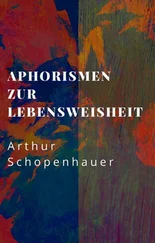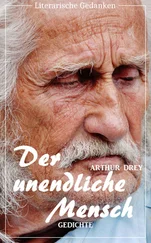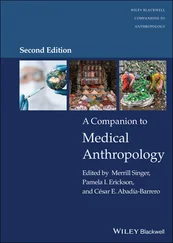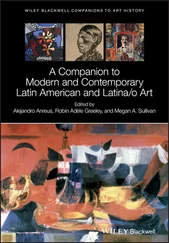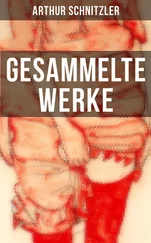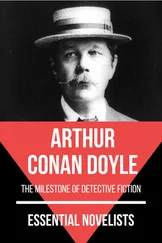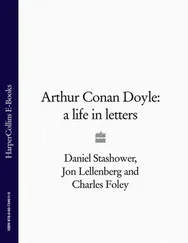A Companion to Arthur C. Danto
Здесь есть возможность читать онлайн «A Companion to Arthur C. Danto» — ознакомительный отрывок электронной книги совершенно бесплатно, а после прочтения отрывка купить полную версию. В некоторых случаях можно слушать аудио, скачать через торрент в формате fb2 и присутствует краткое содержание. Жанр: unrecognised, на английском языке. Описание произведения, (предисловие) а так же отзывы посетителей доступны на портале библиотеки ЛибКат.
- Название:A Companion to Arthur C. Danto
- Автор:
- Жанр:
- Год:неизвестен
- ISBN:нет данных
- Рейтинг книги:5 / 5. Голосов: 1
-
Избранное:Добавить в избранное
- Отзывы:
-
Ваша оценка:
- 100
- 1
- 2
- 3
- 4
- 5
A Companion to Arthur C. Danto: краткое содержание, описание и аннотация
Предлагаем к чтению аннотацию, описание, краткое содержание или предисловие (зависит от того, что написал сам автор книги «A Companion to Arthur C. Danto»). Если вы не нашли необходимую информацию о книге — напишите в комментариях, мы постараемся отыскать её.
Companion
A Companion to Arthur C. Danto
A Companion to Arthur C. Danto — читать онлайн ознакомительный отрывок
Ниже представлен текст книги, разбитый по страницам. Система сохранения места последней прочитанной страницы, позволяет с удобством читать онлайн бесплатно книгу «A Companion to Arthur C. Danto», без необходимости каждый раз заново искать на чём Вы остановились. Поставьте закладку, и сможете в любой момент перейти на страницу, на которой закончили чтение.
Интервал:
Закладка:
Danto, whose interests embraced figures and ideas on both sides of philosophy’s midcentury continental divide, never fully embraced the reigning analytic orthodoxy, even while he thrived in its atmosphere. That said, why, more exactly, did he find Dewey’s philosophy and style so unappealing?
Absent a detailed answer from Danto himself, his metaphilosophical metaphors, at least, are suggestive. In contrast to Dewey’s muddiness and fogginess, he says above that he prefers “architecture” and clear “structure.” In these connections, Danto had long drawn inspiration from the ideal of analytical clarity he found in the writings of Descartes, famous for his image of a building’s foundations as a metaphor for the conditions of knowledge and certainty that philosophy aims to articulate. Actually, Danto’s evolving metaphilosophical vision would turn out to be significantly unCartesian in its denial of the formal demonstrability of virtually any large ontological or epistemological thesis. But he would remain resistant throughout his career to the full fallibilist implications of Dewey’s signature theme of the illusory and culturally situated character of modern philosophy’s Cartesian “quest for certainty.” For Dewey and most pragmatists, thought never stands still long enough to be unconditionally certain, clear, or distinct. Intertwined with earthly bodily life in ways that render Cartesian imagery of pilots and ships quaint and outmoded, thought’s central and normal characteristics include phases of situation-specific indeterminacy and uncertainty along with phases possessing the formal clarity of logic or mathematics. To this extent, what Danto calls Dewey’s own “muddy” and “foggy” qualities here, along with his holism, become Rorschach tests for dramatically different metaphorical pictures of human thought’s relationships to embodiment and agency.
One vivid example of Danto’s own favored picture occurs in his recounting of Chuang-Tze’s story of a butcher:
The king is watching the butcher, and the butcher with just one move makes the carcass fall in pieces. The king says, “How do you do that? You don’t seem to put any effort into it.” And the butcher says, “I studied Tao, and when you study Tao you know how things fit together.”… [T]he butcher adds, “Between two bones, there’s an empty space, and the knife goes into emptiness. When you put emptiness within emptiness, the knife never goes dull and everything falls apart.” That’s what philosophy should be 3(Borradori 1994, 98–9).
This anecdote conveys Danto’s unpreacherly fondness for eighteenth-century-inspired models of analytical clarity. It would have carried decidedly different meanings for Dewey, whose relentless critique of such models was deeply informed by romantic writers such as Wordsworth. (“Sweet is the lore which Nature brings/Our meddling intellect/Mis-shapes the beauteous forms of things/We murder to dissect.”)
Another of Danto’s images would likely have raised Dewey’s eyebrows even more. Recalling the experience of writing his 1965 Analytical Philosophy of History , Danto says that
The book ended with a discussion of what was called Methodological Individualism, the idea that every statement about history is analyzable without remainder into conjunctions of statements about the actions of individual agents. This position paralleled the program that statements about physical objects are analyzable without remainder into conjunctions of statements about sense data. … I had the sense of holding a problem in the muscles of the mind, applying pressure the way a starfish applies pressure in opening a mollusk, until the shell gives way and one sees what was inside (Danto 2013, 19).
Such methodological sentiments contrast vividly with Dewey’s. To think that a concept of any complex phenomenon – of a complex historical event or of certain physical objects, say – is analyzable “without remainder” into conjunctions of more basic concepts or statements is to commit what Dewey called the “analytic fallacy.” A staple of classical empiricism, this pattern of thought makes the mistake of artificially abstracting selected aspects of a whole, historically and culturally, situated experience of inquiry from an original context that includes some specific purpose of the original inquirers (say, prediction and control) and then interpretively projecting them back onto the description of the original situation as if from the beginning they possessed separate, context-independent existences of their own (Dewey 1931).
As it happens, Dewey had himself, decades earlier, described a mind as “a sort of biological thing with arms or tentacles reaching out everywhere, and when they get appropriate food just fastening down upon it” (Dewey 1902, 334). This image condenses the argument of his seminal 1896 article “The Reflex Arc Concept in Psychology,” which focused on the example of a small child curiously reaching for a burning flame, and then upon touching it recoiling with newfound experience and knowledge. Even such simple instances of intelligent behavior, Dewey maintained, show that experience is not structured, contrary to an empiricist tradition that Danto and many other analytic writers still embraced generations later, around an efficiently-causal stimulus-response process in which brute sense data first trigger Lockean-style ideas whose further molecular permutations appear in the understanding, and then afford empirical knowledge. In his example, it is not the sensations from the reaching activity that are properly regarded as explanatorily primary for understanding the child’s behavior (along with its endless analogues throughout the realm of human action). What occupies this role, rather, is the reaching itself , understood as an always-already, future-directed, goal-seeking impulse whose sensorimotor and cognitive components are inextricably bound together in a feedback-looping relationship between the action’s larger and evolving environment. Thus even a little child turns out to be capable of inquiry – Dewey’s term for the myriad ways in which humans seek fresh integration with an environment that continually challenges them not simply to represent it abstractly but reconstructively to interact with it in the course of pursuing and refining their desires.
Decades later, Dewey would use another suggestive metaphor in the “Nature, Life, and Body-Mind” chapter of Experience and Nature , which remains a key text for discussions of the metaphysical bases of embodied phenomenology and cognition. Here he comments that
To see the organism in nature, the nervous system in the organism, the brain in the nervous system, the cortex in the brain is the answer to the problems which haunt philosophy. And when thus seen they will be seen to be in , not as marbles are in a box but as events are in history, in a moving, growing, never finished process (Dewey 1925, 224).
In addition to emphasizing the emergent-naturalist theme of the ontological continuity of cognitive and bodily processes, Dewey signals his process-philosopher’s rejection of atomistic methodologies (“marbles in a box”) in a variety of traditional contexts, including in classical empiricist and Kantian accounts of perception. Danto never undertook to rebut this centerpiece of Deweyan experimental pragmatism in any detail in his influential books of the 1960s and 1970s, such as Analytical Philosophy of Action , Analytical Philosophy of Knowledge , and Analytical Philosophy of History . Why the silence? One possibility – this is just a guess – is that, given how passé Dewey had become for many analytic readers by then, Danto saw no need to pick a fight with a ghostly opponent. And this all the more if that opponent’s philosophical system – as was suggested by the metaphilosophical perspectivism which became central to Danto’s thinking by the 1960s – had an inferential structure that he saw to be incommensurable with his own. (But ghost-banishing is not, as later neoDeweyan turns in philosophy and elsewhere would bear out, sufficient for ghost-busting.)
Читать дальшеИнтервал:
Закладка:
Похожие книги на «A Companion to Arthur C. Danto»
Представляем Вашему вниманию похожие книги на «A Companion to Arthur C. Danto» списком для выбора. Мы отобрали схожую по названию и смыслу литературу в надежде предоставить читателям больше вариантов отыскать новые, интересные, ещё непрочитанные произведения.
Обсуждение, отзывы о книге «A Companion to Arthur C. Danto» и просто собственные мнения читателей. Оставьте ваши комментарии, напишите, что Вы думаете о произведении, его смысле или главных героях. Укажите что конкретно понравилось, а что нет, и почему Вы так считаете.
